The story of an emigrant: how does a Ukrainian live in Canada?

Photos from the personal archive of Violetta Genova
ForumDaily continues to publish stories of Russian-speaking immigrants who have traveled around the world. More life stories can be read. here.
Violetta Genova from the small town of Primorsk, Zaporozhye region, dreamed of moving to Canada when she was in first grade, and 16 years later her dream came true. Today Violetta is a student at one of the prestigious Canadian colleges, the head of the student council, and organizes leisure activities for 28 thousand of her college classmates.
"Observer" questioned Violetta on the intricacies of learning in Canada. You can also follow the story of Violetta in her instagramme.
Moving history
I really love telling the story of my move to Canada. No matter how smugly it sounded, I always knew that I was not born there ... As a child, I understood that I was cramped in my little Primorsk.
In first grade, our teacher came up with an interesting idea - to write down the dream of each student and voice this recording at graduation. Other kids said they wanted to become doctors or actors, but my dream was to go live in Toronto with my cousin.
After the second year of Kharkov University, I went to Alaska according to the program Work and Travel to USA. Returning to Ukraine, I firmly decided to move, but not to the United States, but to Canada. Choosing a college and going through all the stages of admission, I myself paid for the first semester of the money I earned in Alaska.

Photos from the personal archive of Violetta Genova
I study in Seneca College of Applied Arts and Technology on the program Animation (animation), although initially entered marketing.
It's pretty easy to change your direction in college. The main thing is that there are places for the program, and that you fulfill all the requirements. For example, for graphic design you had to put together a portfolio of 10 drawings and write a motivation letter. For animation - portfolio, drawing exam and entrance exam in English.
What is the admission process?
— Passing the English exam Toefl / Celpip / Ielts or admission to an English course at college.
— Submit documents directly on the college/university website.
— Receiving a letter of acceptance from the educational institution (if good grades in the diploma and excellent English - 99% guarantee of admission).
— Payment for the first semester at college/university (this is not necessary, but the chances of getting a visa will increase).
— Submitting documents to the Canadian Embassy for a student visa (difficult and most important stage).
- Body check.
— Request for a passport by the embassy.
— Buying a ticket.
— At the airport you receive a “study permit” (Study permit). It can only be obtained by landing in Canada. With this permission, you can not only study, but also work 20 hours per week off-campus and unlimited amount of time on campus. In addition, you get a credit card on 500 $.

Photos from the personal archive of Violetta Genova
75% of all training should be full time (i.e., full day), and 25% may be part time. On 30, the day after the beginning of the semester, all colleges send a list of foreign students who are registered for this semester. If you don’t study for two semesters in a row, the embassy can cancel student status.
Tuition
The tuition fee for my specialty is 8500 Canadian dollars ($6) per semester. Regular programs in Seneca - 700 Canadian dollars ($6500). I started working from the first semester and became financially independent from the third semester.
There is no such thing as a scholarship in Canada, neither for Canadians, nor even more so for foreign students. Locals can get OSAP - this is an interest-free student loan for 10 years. Therefore, all Canadians, after graduating from an educational institution, begin adult life with a debt of at least 40 dollars, and if it is medicine or law, then all 000. Many parents begin to save money for their child’s education from the moment of his birth.
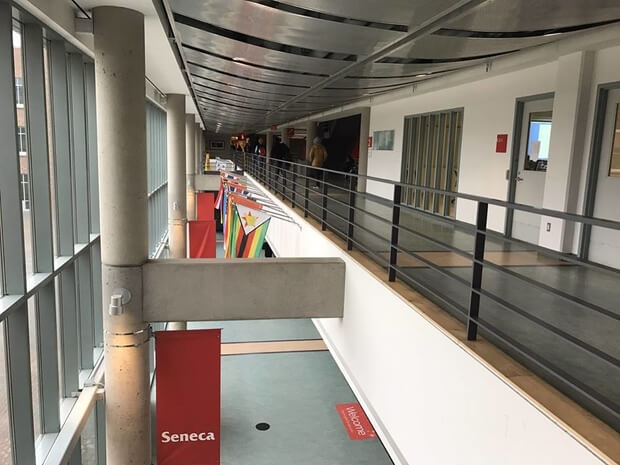
Photos from the personal archive of Violetta Genova
Learning process
On my program, lectures were given to us only on the history of animation.

Photos from the personal archive of Violetta Genova
All other classes are 99% practice. The teacher introduces the project, shows examples of the work of former students, and teaches certain programming techniques. We work in Photoshop, Illustrator, Indesign, ToonBoom, Maya, Z-brush, After Effects, Premier pro and Flash. The first two years are the same for all students, but in the third year you can choose 2D or 3D animation or game design. I chose the 3D animation.

Photos from the personal archive of Violetta Genova
We recite about 50% of the required material, and the rest must be independently searched and studied. But everyone is ready to share material and online courses.
What strikes the Canadian education system
— you can create a schedule yourself;
— the number of subjects per semester also depends on the student;
— all projects and works are submitted electronically through the college website;
— everyone comes to classes/lectures with laptops;

Photos from the personal archive of Violetta Genova
— there is no dress code, students often come in short shorts and do not take off their hats indoors;
— no one monitors attendance or checks for notes;
- free tutors in all subjects - they are hired and paid by the university, mainly from among students who have completed at least two semesters and are good students;
— a very serious attitude towards plagiarism: all work submitted by students is checked for plagiarism, and if the work/abstract/essay is copied by at least 10%, the subject is failed;
— if they see that someone is cheating or spying, Canadians can turn them in. By the way, people here are generally very law-abiding. Once in a supermarket, I saw a woman lightly spank her little daughter on the bottom because she was very naughty. This is strictly prohibited here. A stranger saw the scene and immediately called 991. Five minutes later I saw the police arrive and take the mother and baby out of the store. At that moment I understood why Canada is such a disciplined country, including its students;
- very trusting and free relationships with teachers. For example, everyone calls teachers by name and may even say: “Hey, you!” Students pay for education and believe that teachers work for them. Therefore, if a professor is doing a poor job, students feel the need to notify the program coordinator or even the campus dean.
My teachers are all on Facebookthey often comment on pictures of students and are actively involved in all student discussions. This is very funny.
Student leisure
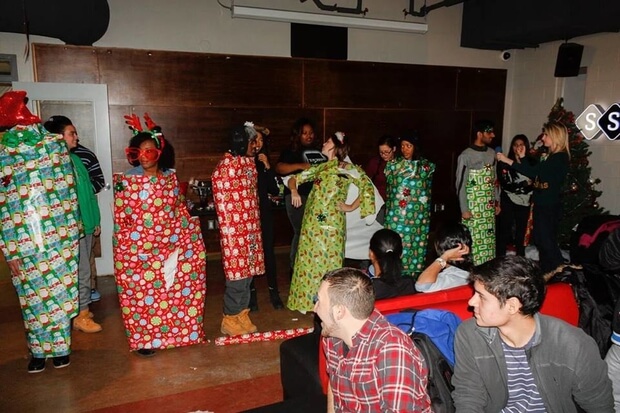
Photos from the personal archive of Violetta Genova
Almost all leisure time in college is organized by the Student Organization, of which I am the vice-president. We organize budget trips, sell discounted tickets to popular performances, exhibitions, and concerts. Each semester begins with a FROSH party - something like a welcome for new students. We invite a singer/band, organize competitions, and give out free food and gifts to first-year students.
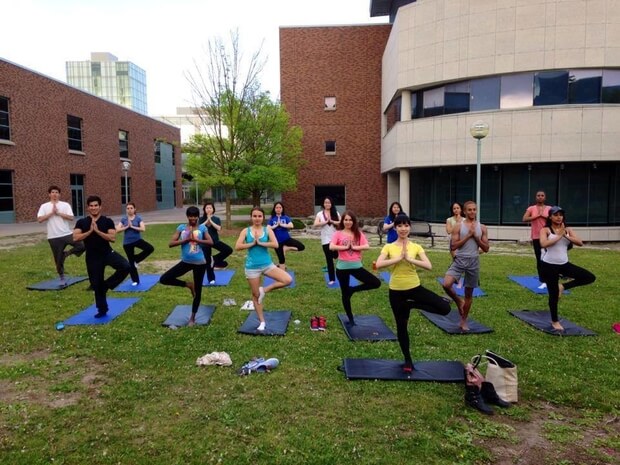
Photos from the personal archive of Violetta Genova
Library
In the library you can find absolutely any book, but you can not take everything home. Books that are needed on couples, are issued only for two hours to each student.
Almost every semester requires new books and, on average, the student spends $ 300 per semester on textbooks. I do not need books, but the same $ 300 I spend on the purchase of materials for drawing.
Dormitory
This is the most expensive accommodation option (two semesters cost $7000, one semester costs $4000). On each floor there is a place for leisure: a cinema, a party room, a gym. Across the floor are laundry rooms with washers and dryers.
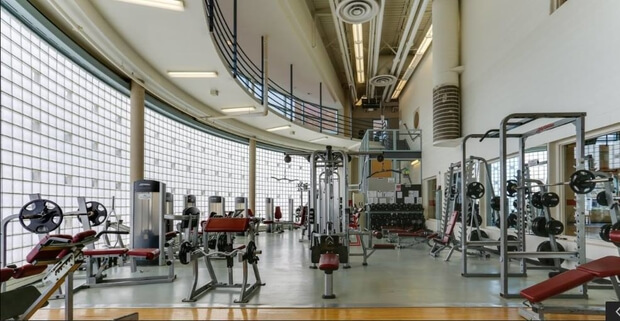
Photos from the personal archive of Violetta Genova
For comparison: a room in a house starts from $350 per month, a one-room apartment starts from $950, and a two-room apartment starts from $1150. Agree, renting a full-fledged apartment with its own kitchen and bathroom for $950 is better than sharing a bathroom with another student and a kitchen with the entire dorm.
True, the hostel has a bonus: there are many students from different countries, so this is a great place to meet.
Medical insurance
Insurance is included in the tuition fee, even includes the services of a dentist and an ophthalmologist (this is a rarity in Canadian colleges).
Emergency medicine here is great! But ordinary routine examinations or tests are so-so. Here it is believed that medicine is like the fire service, only it extinguishes fire, and does not monitor the implementation of fire safety regulations. Ukrainian medical service, it seems to me, is better.
For example, if your baby has a fever, you need to go with him to the hospital and wait in line. No one will come to the house, and if they do, the bill will be huge. Doctors like to prescribe painkillers - as if they were “treated”. Of course, a lot depends on the family doctor. Here, each family has its own family doctor, and it is this doctor who prescribes medications and refers to a specialist. I don't have my own doctor yet, so if I need anything, I go to Walk-in clinic — they are in every region. Here you can undergo an examination and get a prescription for pills.
Food and food prices
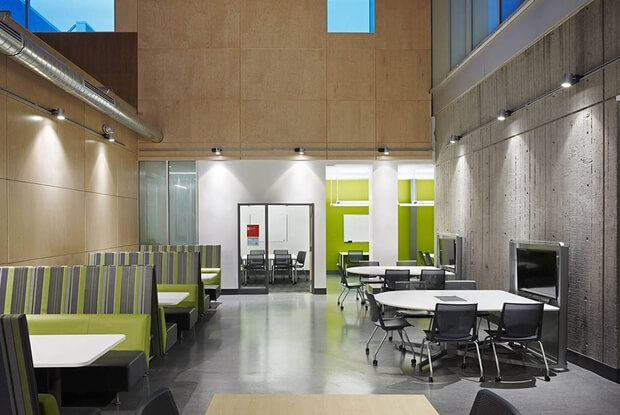
Photos from the personal archive of Violetta Genova
There is a cafeteria on campus that is either expensive/healthy or cheap/pizza. This is a problem for me: a small salad costs $10. And many students complain. There is also a small shopping center near the college with various shops and cafes - you can find better food there. On average $10 for lunch (a plate of rice with meat and vegetables). Check in a cafe (coffee and cake) - approximately $7; At Starbucks, regular coffee and cookies will cost $5; in a good coffee shop, a cake and latte can cost $12. And this is not the final price - you need to take into account that in Canada all prices on labels are indicated without tax and 13% is added to the price at the checkout.
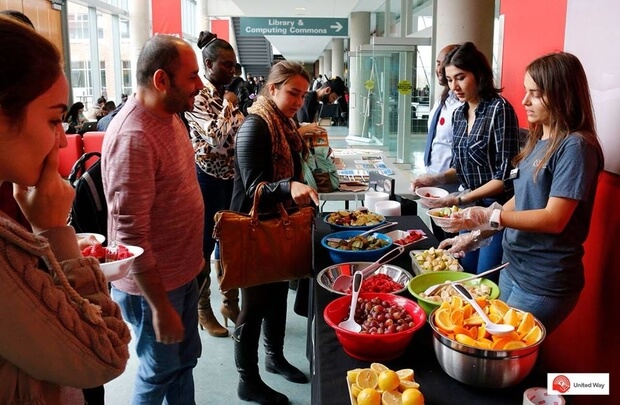
Photos from the personal archive of Violetta Genova
One of the points of my election campaign for the position of the Vice-President of the Student Federation was the proposal to provide free food in college. And now almost every day we bake pancakes, cheese sandwiches, buy a mountain of fruit and distribute fruit salads. This practice has become popular, and we have a special budget for the further holding of such events.
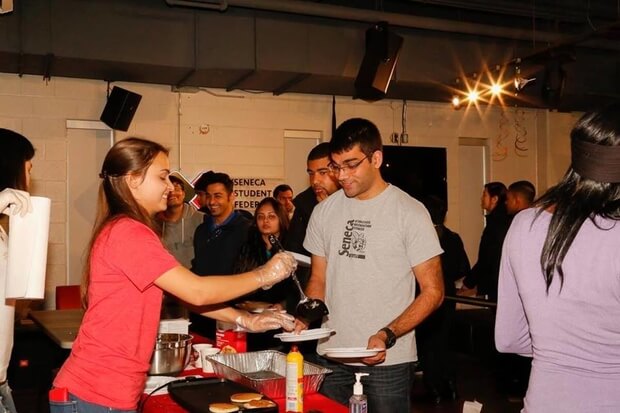
Photos from the personal archive of Violetta Genova
As for prices in supermarkets, they are approximately as follows: bread $2-6, milk 2% fat from $2 per liter; the price of meat depends on its quality - regular chicken starts from $10 per kilogram, but you can find organic chicken for $20/kg.
Vegetables and fruits: oranges $ 4 / kg, bananas $ 1 / kg, potatoes $ 2 / kg, pineapple $ 4 per unit (all prices are in Canadian dollars).
Meals for a family of two people cost about $ 800 per month, but you can live on $ 600 if you save.

Photos from the personal archive of Violetta Genova
Summary
Of course, I plan to stay here after graduation. I love Canada! After receiving my diploma, I will be given a work visa for 3 years, and during this time I will try to obtain a residence permit. My dream job is as a producer.
Read also on ForumDaily:
Confession of an emigrant: how does a Ukrainian woman live in Mexico
How immigrant pensioners live in New York
Three options for how to enroll in an American university
“I have nothing more to lose”: the revelations of the Russian nelegalka in the USA
15 ways to avoid debt while you are in college
Subscribe to ForumDaily on Google NewsDo you want more important and interesting news about life in the USA and immigration to America? — support us donate! Also subscribe to our page Facebook. Select the “Priority in display” option and read us first. Also, don't forget to subscribe to our РєР ° РЅР ° Р »РІ Telegram and Instagram- there is a lot of interesting things there. And join thousands of readers ForumDaily New York — there you will find a lot of interesting and positive information about life in the metropolis.












